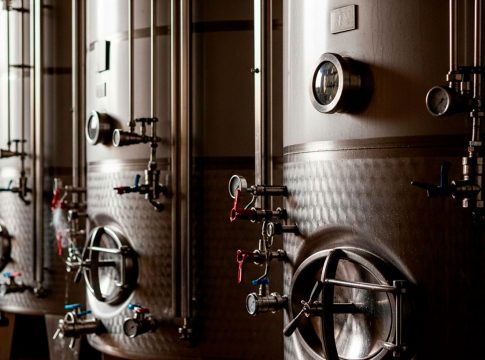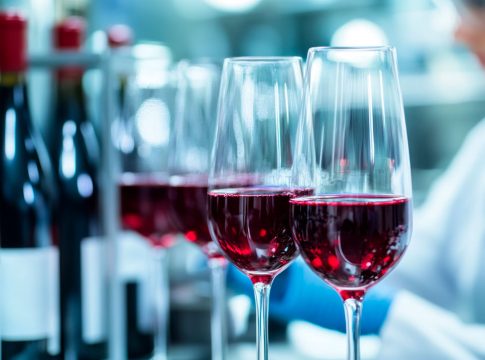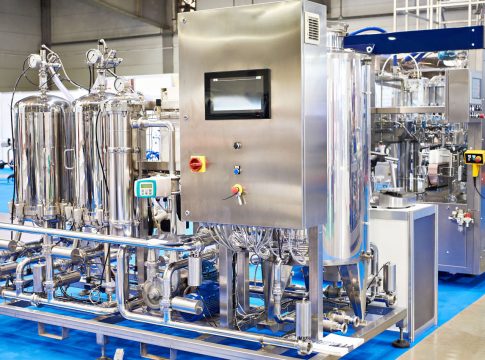
Come noto, durante la fermentazione alcolica i lieviti trasformano alcuni precursori di aromi in composti aromatici. Risulta ormai acquisito il fatto che alcuni terpeni delle uve, come linalolo, geraniolo, nerolo, citronellolo, α-terpineolo e ossido di linalolo, legati a diglucosidi, contribuiscano in modo significativo al bouquet del vino. L'idrolisi enzimatica di questi composti richiede una reazione sequenziale: dapprima una α-L-ramnosidasi o una β-D-apiofuranosidasi taglia il legame glicosidico in posizione 1-6; poi i composti aromatici vengono liberati dai monoglucosidi dall'azione di una β-glucosidasi. La rottura dei legami può avvenire anche...
L'ARTICOLO COMPLETO A FIRMA DI ALEXANDRA BISOTTO ET AL. E' PUBBLICATO A PAGINA 36 DEL FASCICOLO 5/2015 DI VQ. PER ACCEDERE ALLA RIVISTA ONLINE E' NECESSARIO ESSERE ABBONATI.
VAI ALLA PAGINA DEGLI ABBONAMENTI
PER APPROFONDIRE (Approfondimenti a cura degli autori)
Tabelle di approfondimento
Bibliografia
Bellon, J.R., Schmid, F., Capone, D.L., Dunn, B.L. and Chambers, P.J. (2013). Introducing a new breed of wine yeast: interspecific hybridisation between a commercial Saccharomyces cerevisiae wine yeast and Saccharomyces mikatae. PLoS ONE doi: 10.1371/journal.pone.0062053. Bicas, J.L., Dionı’sio, A.P. and Pastore, G.M. (2009) Bio-oxidation of terpenes: an approach for the flavor industry. Chemical Review 109, 4518–4531. Chambers, P.J., Bellon, J.R., Schmidt, S.A., Varela, C. and Pretorius, I.S. (2009) Non-genetic engineering approaches for isolating and generating novel yeasts for industrial applications. Satyanarayana, T. and Kunze, G.,eds. Yeast biotechnology: diversity and applications (Springer: New York, USA) pp. 431–455. Darriet, P., Boidron, J.N. and Dubourdieu, D. (1988) L’hydrolyse des hétérosides terpèniques du Muscat à petits grains par les enzymes périplasmiques de Saccharomyces cerevisiae. Connaissance Vigne Vin 22, 189–195. Delcroix, A., Günata, Z., Sapis, J.C., Salmon, J.M. and Bayonove, C. (1994) Glycosidase activities of three enological yeast strains during winemaking – effect on the terpenol content of muscat wine. American Journal of Enology and Viticulture 45, 291–296. Gamero, A., Hernández-Orte, P., Querol, A. and Ferreira, V. (2011) Effect of aromatic precursor addition to wine fermentations carried out with different Saccharomyces species and their hybrids. International Journal of Food Microbiology 147, 33–34. Gamero, A., Manzanares, P., Querol, A. and Belloch, C. (2011) Monoterpene alcohols release and bioconversion by Saccharomyces species and hybrids. International Journal of Food Microbiology 145, 92–97. Gil, J.V., Manzanares, P., Genovés, S., Vallés, S. and Gonzalez Candelas, L. (2005) Over-production of the major exoglucanase of Saccharomyces cerevisiae led to an increase in the aroma of wine. International Journal of Food Microbiology 103, 57–68. Günata, Z., Bayonove, C., Baumes, R. and Cordonnier, R. (1985) The aroma of grapes. Extraction and determination of free and glycosidically bound fractions of some grape aroma components. Journal of Chromatography 331, 83–90. Günata, Z., Bitteur, S., Brillouet, J.M., Bayonove, C. and Cordonnier, R. (1988) Sequential enzymic hydrolysis of potentially aromatic glycosides from grape. Carbohydrate Research 184, 139–149. Günata, Z., Bayonove, C., Tapiro, C. and Cordonnier, R. (1990) Hydrolysis of grape monoterpenyl β-glucosides by various β-glucosidases. Journal of Agricultural and Food Chemistry 38, 1232–1236. Günata, Z., Dugelay, I., Sapis, J.C., Baumes, R. and Bayonove, C. (1993) Role of the enzymes in the use of the flavour potential from grape glycosides in winemaking. Schreier, P. and Winterhalter, P., eds. Progress in flavour precursor studies (Allured Publishing Corporation: Carol Stream, IL, USA) pp. 219–234. Hernandez-Orte, P., Cersosimo, M., Loscos, N., Cacho, J., Garcia Moruno, E. and Ferreira, V. (2008) The development of varietal aroma from nonfloral grapes by yeasts of different genera. Food Chemistry 107, 1064– 1077. Loscos, N., Hernandez-Orte, P., Cacho, J. and Ferreira, V. (2007) Release and formation of varietal aroma compounds during alcoholic fermentation from nonfloral grape odorless flavor precursors fractions. Journal of Agricultural and Food Chemistry 55, 6674–6684. Loscos, N., Hernandez-Orte, P., Cacho, J. and Ferreira, V. (2009) Fate of grape flavor precursors during storage on yeast lees. Journal of Agricultural and Food Chemistry 57, 5468–5479. Mendes Ferreira, A., Amaco, M.C. and Mendes Faia, A. (2001) The role of non-Saccharomyces species in releasing glycosidic bound fraction of grape aroma components: a preliminary study. Journal of Applied Microbiology 91, 67–71. Rapp, A., Günter, M. and Ulmeyer, M. (1985) Uber varänderungen der aromastoffe während der flashenlagerung von weisweinen der rebsorte Riesling. Zeitschrift für Lebensmittel Untersuchung and Forschung 180, 109–116. Romano, P., Grazia Soli, M., Suzzi, G., Grazia, L. and Zambonelli, C. (1985) Improvement of a wine Saccharomyces cerevisiae strain by a breeding program. Applied and Environmental Microbiology 50, 1064–1072. Rosi, I., Vinella, M. and Domizio, P. (1994) Characterization of β-glucosidase activity in yeasts of oenological origin. Journal of Applied Bacteriology 77, 519–527. Rosi, I., Domizio, P., Vinella, M. and Salicone, M. (1995) Hydrolysis of grape glycosides by enological yeast β-glycosidases. Charalambous, G., ed. Food flavours: generation, analysis and process influence (Elsevier Science: Amsterdam, The Netherlands) pp. 1623–1635. Salmon, J.M. (1984) Application of the technique of cellular permeabilization to the study of the enzymatic activities of Saccharomyces cerevisiae in continuous alcoholic fermentation. Biotechnology Letters 6, 43–48. Salmon, J.M. (1986) Mise en évidence d’un rôle anabolique de l’acide Lmalique chez Saccharomyces cerevisiae en anaérobiose et en conditions oenologiques. PhD thesis (Microbiology), Université des Sciences et Techniques du Languedoc, Montpellier, France. Schneider, R., Razungles, A., Augier, C. and Baumes, R. (2001) Monoterpenic and norisoprenoidic glycoconjugates of Vitis vinifera cv. Melon B. as precursors of odorants in Muscadet wines. Journal of Chromatography. A 936, 145–157. Ugliano, M., Bartowsky, E., MacCarthy, J., Moio, L. and Henscke, P. (2006) Hydrolysis and transformation of grape glycosidically bound volatile compounds during fermentation with three Saccharomyces yeast strains. Journal of Agricultural and Food Chemistry 54, 6322–6331. Williams, P.J., Sefton, M.A. andWilson, B. (1989) Non volatile conjugates of secondary metabolites as precursors of varietal grape flavor components. Teranishi, R., Buttery, R. and Shahidi, R., eds. Flavor chemistry: trends and developments (American Chemical Society: Washington, DC, USA) pp. 35–48. Zoecklein, B.W., Marcy, J.E., Williams, J.M. and Jasinski, Y. (1997) Effect of native yeasts and selected strains of Saccharomyces cerevisiae on glycosyl glucose, potential volatile terpenes, and selected aglycones of white Riesling (Vitis vinifera ) wines. Journal of Food Composition and Analysis 10, 55–65.










